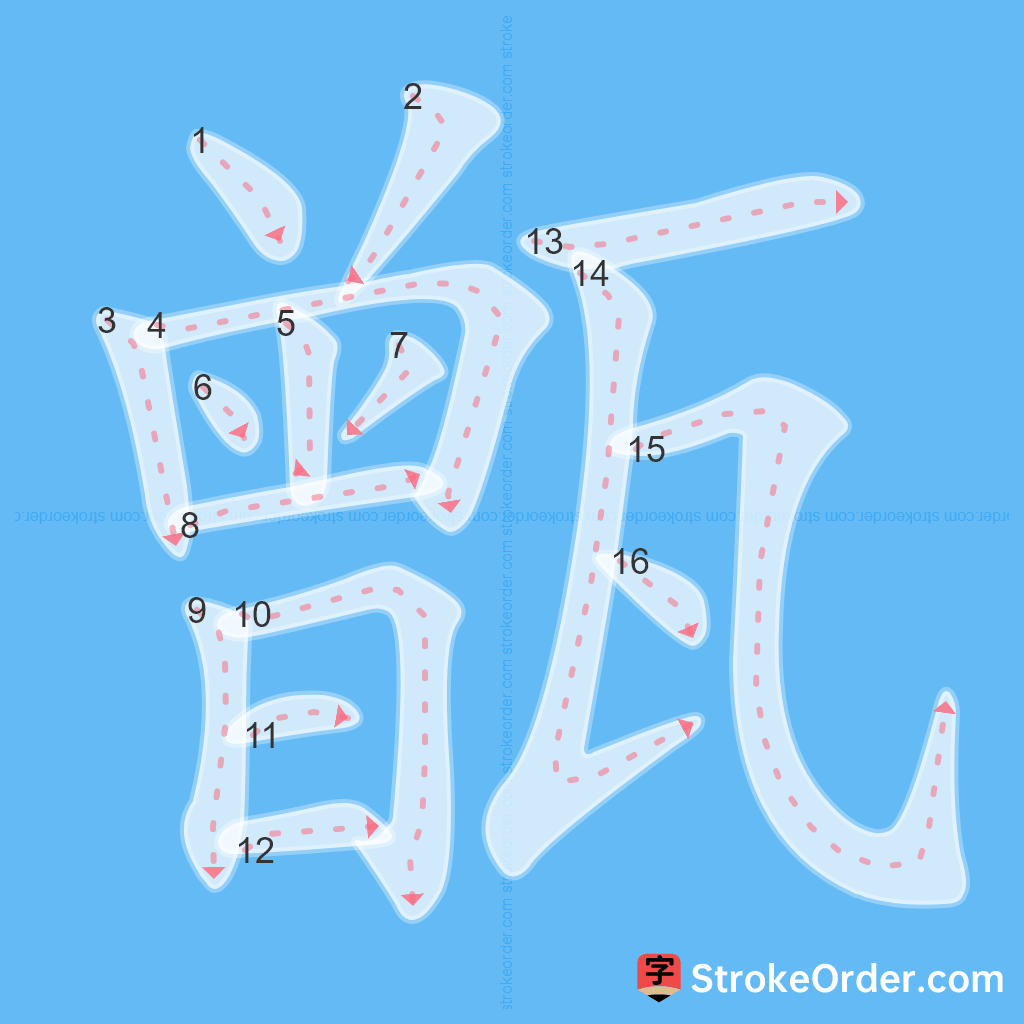甑 Stroke Order
Animated Stroke Order of 甑

Stroke Order Diagrams for 甑

Step-by-Step Handwriting Guide for 甑

Learn to Write Chinese Characters with Video Tutorials
Watch the video of writing the Chinese character "甑", learn the correct stroke order (笔顺) of the character "甑", and master the standard way of writing the character "甑".
Free Printable Handwriting Practice with Stroke Order: 甑
Printable Writing Practice Worksheet of "甑" in Portrait Orientation (Tian Zi Ge)

Printable Writing Practice Worksheet of "甑" in Landscape Orientation (Tian Zi Ge)

Information of 甑
Pinyin
zèng
Radical
瓦
Strokes
16 strokes
Usage
★★★★
Definition
caldron / rice pot
甑 [zèng]
1. 古代蒸饭的一种瓦器。底部有许多透蒸气的孔格,置于鬲上蒸煮,如同现代的蒸锅。
(An ancient earthen utensil for steaming rice. It has many small holes at the bottom for steam to pass through and is placed on a cauldron for cooking, similar to a modern steamer.)
2. 〔~子〕现在蒸饭用的木制桶状物,有屉而无底。
(A rice steamer used today, shaped like a wooden bucket, having a tray but no bottom.)
3. 蒸馏或使物体分解用的器皿。
(An utensil for distilling water, etc.)
甑 [zèng]
1. 同本义。
(The same as the primary meaning: an ancient earthen utensil for steaming rice.)
2. 蒸米饭的用具,略像木桶,有屉子而无底,亦作“甑子”。
(A rice steamer, somewhat like a wooden bucket, with a tray but no bottom, also called “甑子”.)
3. 蒸馏或使物体分解用的器皿。
(An utensil for distilling water, etc.)
引:
1. 《说文》:甑,甗也。
(From the Shuowen by Xu Shen: 甑 is the same as 甗.)
2. 甑,自关而东谓之甗,或谓之甑。——《方言》五
(The term 甑 is used in the eastern regions, also referred to as 甗. – From Fangyan)
3. 《孟子·滕文公上》:许子以釜甄爨,以铁耕乎?
(From Mencius: Can one cook with a pot and steamed utensils, and plow with iron?)
4. 《后汉书·孟敏传》:荷甑堕地,不顾而去。
(From the Book of the Later Han: The pot fell to the ground and was left behind.)
5. 宋·陆游《杂题六首》:朝甑米空烹芋粥,夜缸油尽点松明。
(From Lu You of the Song Dynasty: In the morning, the steamer is empty for cooking taro porridge; at night, the oil in the tank runs out, and pine wood is lit.)
例:
如:他到灶屋抓了一把甑边饭。
(For example: He went to the kitchen and grabbed a handful of rice from the steamer.)
Input Method for 甑
Pinyin
zeng4
Wubi
uljn|uljy
Cangjie
camvn
Zhengma
udys
Four Corner
81617
Unicode
U+7511